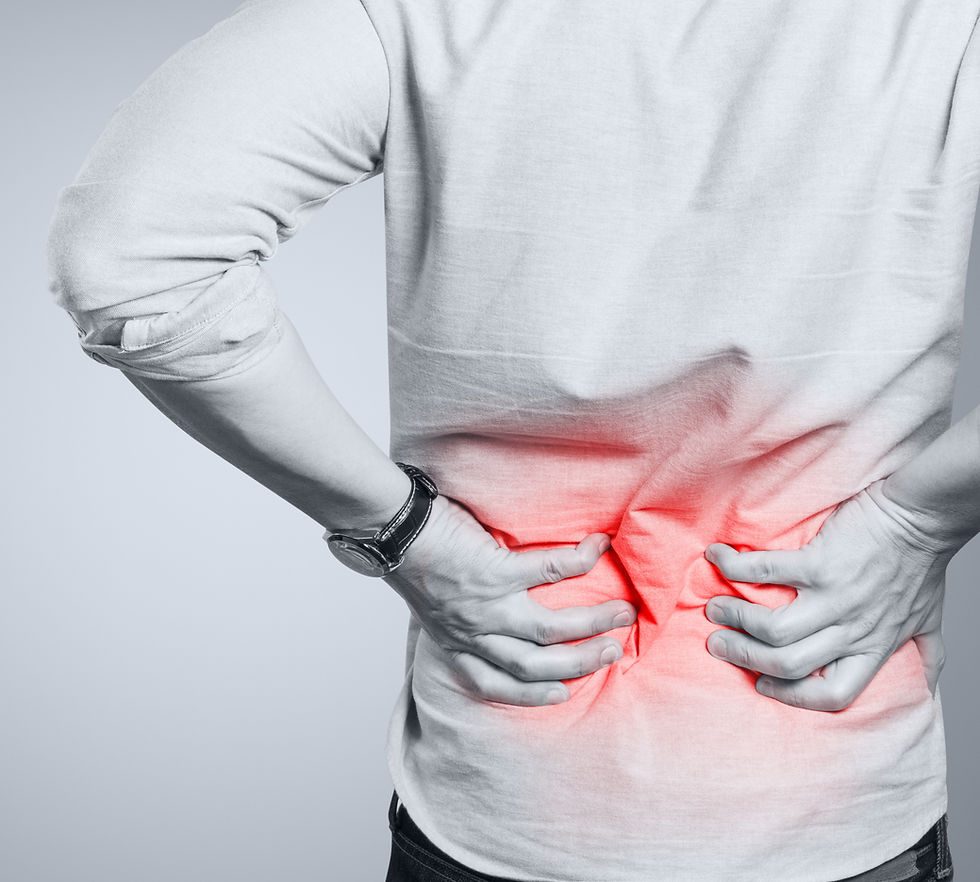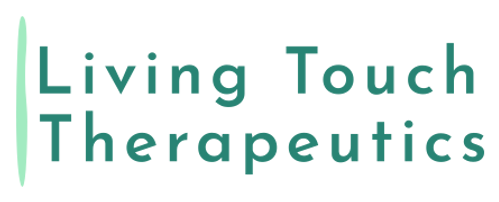3 Key Aspects to Relieving Lower Back Pain Through Massage and Exercise
- Benjamin Mishleau
- Nov 18, 2024
- 4 min read
Updated: Feb 9

Odds are, either you or someone you know well is currently suffering from low back pain. You aren't alone. How can a combination of massage and personal training help you put away the pain medication and start living your life again? Let's take a look at low back pain, and how it can be reduced and healed.
Low Back Pain—A Common Struggle
Back pain is something almost every adult experiences at some point in life. Whether it's from sitting too long at a desk, lifting heavy objects, or simply the result of poor posture, back pain can interfere with daily activities and overall quality of life. But the good news is, relief is possible—and it starts with understanding your pain and taking proactive steps to address it.
Massage and corrective exercises are powerful tools in managing and reducing back pain. In this guide, we’ll explore the different types of back pain, how massage and exercise can help, and how you can start your journey to feeling better today.
Why Do We Get Low Back Pain?
The low back often becomes the "dumping zone" for many issues within the body. When other joints or muscles are not working efficiently, the low back bears the brunt of the stress. If your body isn’t properly aligned or you have poor posture, it can lead to extra strain on the low back. For example, tight hips or weak glutes can force your low back to compensate by moving more than it should, which increases the risk of injury.
The low back is made up of individual vertebrae, with discs in between each vertebra. These discs act as cushions, absorbing shock and allowing the spine to move freely. However, if these discs are damaged—such as with a bulged or herniated disc—pain can occur. Yet, research has shown that a bulged disc isn’t always the main source of pain. In fact, many people have bulging discs without any symptoms, indicating that there may be other factors contributing to the pain, such as muscle imbalances or joint dysfunction.
The low back is also affected by three major factors: the speed (velocity) of movement, the amount of force or effort, and the posture of the spine during activity.
Velocity of Movement: The faster you move something, the more force you place on your low back. For instance, you might be able to lift something heavy slowly without issue, or something light quickly, but moving something heavy very fast—like in a fast twist or lift—places significantly more stress on the lower back.
Effort or Force: The more weight or resistance you try to move, the more stress your lower back must handle. This is why proper lifting technique is crucial to avoid injury, as improper form with heavy loads can lead to serious strain on the spine.
Posture of the Low Back: The alignment of your spine plays a critical role in how force is distributed across the low back. For example, when squatting or bending over, if your back rounds at the bottom (known as a “butt wink”), your spine loses its natural curve. This misalignment places uneven pressure on the discs, increasing the risk of injury. When the low back is properly aligned, the load is distributed evenly across the discs and vertebrae. But if the hips are too tight or the core is weak, your low back has to compensate by moving more, which places additional stress on the area.
Understanding these factors can help us peel back the possible layers on what may be actually happening in your body that is causing the low back to be shifted or overexposed to excess stress. To simplify what we are seeing in the research, low back pain may be the symptom that the body is showing instead of the real problem which can range from the foot to the head. As we keep exploring this mental shift let's dive into the different types of back pain and a little test to see what might fit your case best.
Key Types of Low Back Pain and How to Address Them
Flexion-Related Pain (Bending Forward)
Pain during bending often stems from tight hips or hamstrings, which can flatten the natural curve of your lower back. This discomfort may make daily tasks like bending or picking things up painful.
How to Address It:
Exercises: Single-leg hip hinges, core breaths, glute bridges, bird dogs, and deadbugs help improve flexibility and core stability to reduce flexion pain.
Test: Sit and bend forward. If pain occurs, flexion-related issues may be present.
Extension-Related Pain (Leaning Back)
If leaning back or standing for too long causes discomfort, the lower spine's joints or tight muscles may be compressed.
How to Address It:
Exercises: Cat-cow stretches, hip flexor stretches, glute bridges, and planks help improve posture and alleviate compression.
Test: Stand and lean back. Discomfort could indicate extension-related pain.
Rotation and Extension Pain
Pain during twisting or leaning back can indicate imbalances in hip alignment or muscle tightness on one side, common in athletes or those with poor posture.
How to Address It:
Exercises: Hip flexor stretches, side-lying thoracic rotation, clamshells, and standing hip hinges with rotation restore balance and reduce pain.
Test: Twist while leaning back. Pain on one side may indicate an imbalance.
Pain Under Load (Lifting or Long Postures)
Discomfort from lifting or standing for long periods is often due to muscle fatigue or improper mechanics.
How to Address It:
Exercises: Plank variations, single-arm suitcase carries, Jefferson curls, and bird dogs build core strength and endurance to support your lower back.
Test: Reflect on your pain—does it worsen after lifting or standing? If so, this may indicate pain under load.
How Massage and Exercise Work Together
Massage therapy and corrective exercises are a powerful combination for addressing back pain. Massage helps relieve tension and restore mobility, while exercise builds strength and corrects imbalances. Whether your back pain stems from movement, posture, or lifting, these methods work together to provide long-lasting relief and improve your quality of life.
Take action now to start living pain-free! Let us help you create a personalized plan for back pain relief and get back to the activities you love.





Comments